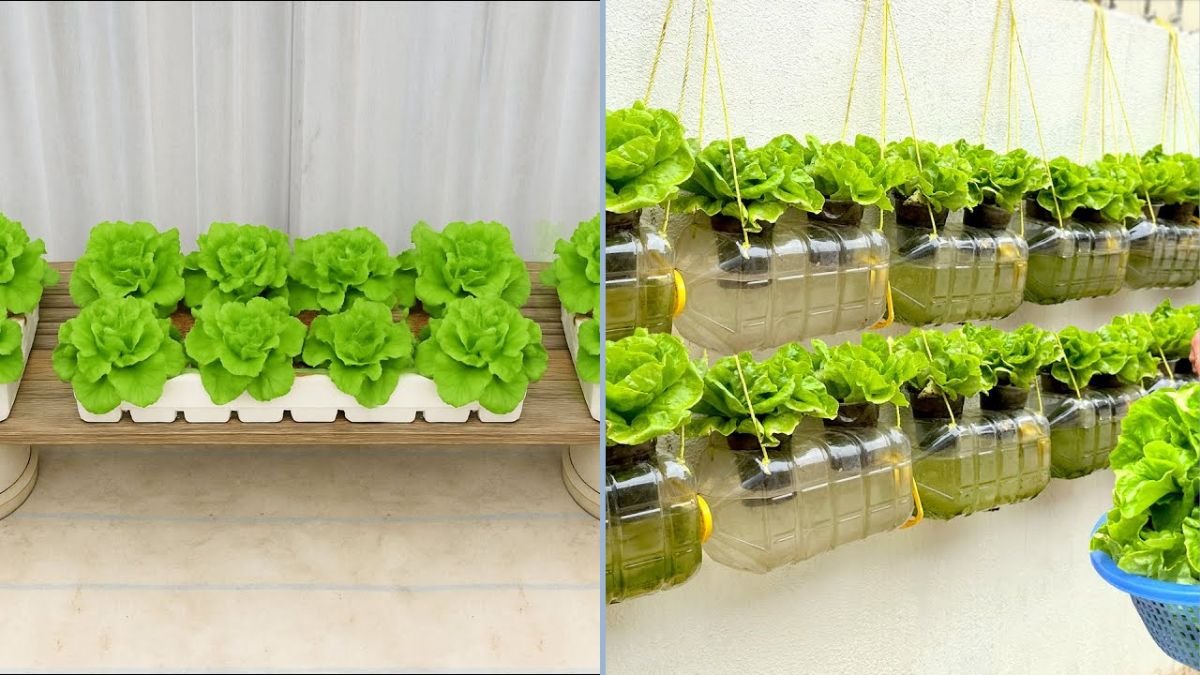Lettuce is one of the most popular and versatile vegetables in kitchens worldwide. Its crisp texture, mild flavor, and nutritional value make it a favorite for salads, sandwiches, wraps, and even smoothies. Traditionally, growing lettuce requires fertile soil, space, and careful watering. But what if you could grow large, crispy, sweet leaves without soil? Yes, it’s possible! Thanks to soil-free growing methods, you can cultivate healthy, productive lettuce right at home—whether on a balcony, terrace, or indoors. In this guide, we’ll explore a step-by-step approach to growing soil-free lettuce that’s big, crunchy, and incredibly flavorful.
Why Grow Lettuce Without Soil
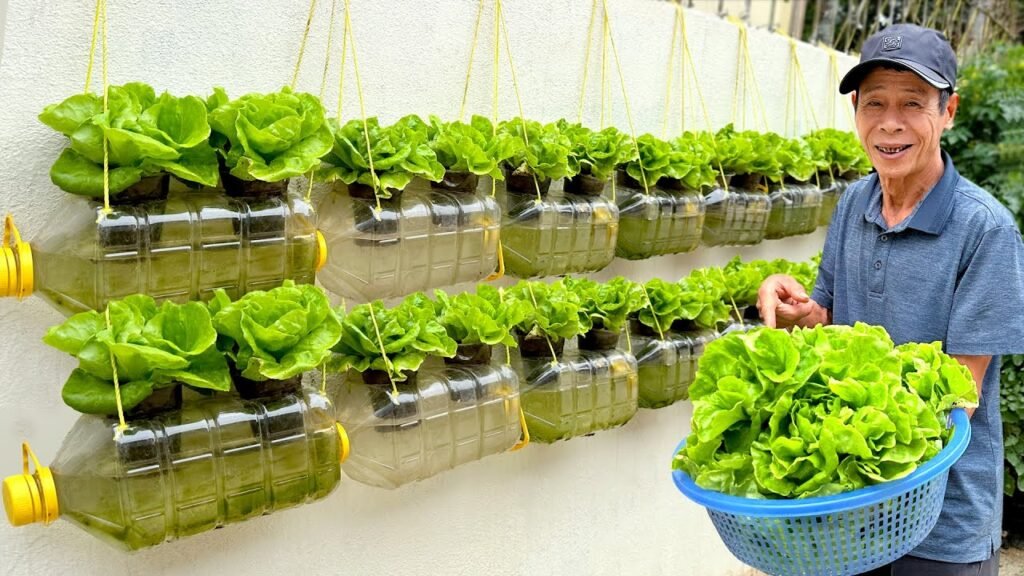
Growing lettuce without soil, also known as hydroponics or soilless culture, offers multiple advantages:
- Space-saving: Perfect for small apartments, balconies, or indoor gardening.
- Faster growth: Nutrient solutions directly feed the roots, accelerating growth.
- Higher yields: Lettuce grows larger and crisper compared to traditional soil methods.
- Reduced pests and diseases: Soil-borne problems like root rot and fungal infections are minimized.
- Year-round cultivation: Control over environment allows continuous growth regardless of weather.
Soilless methods make lettuce cultivation accessible, convenient, and highly productive.
Choosing the Right Lettuce Variety
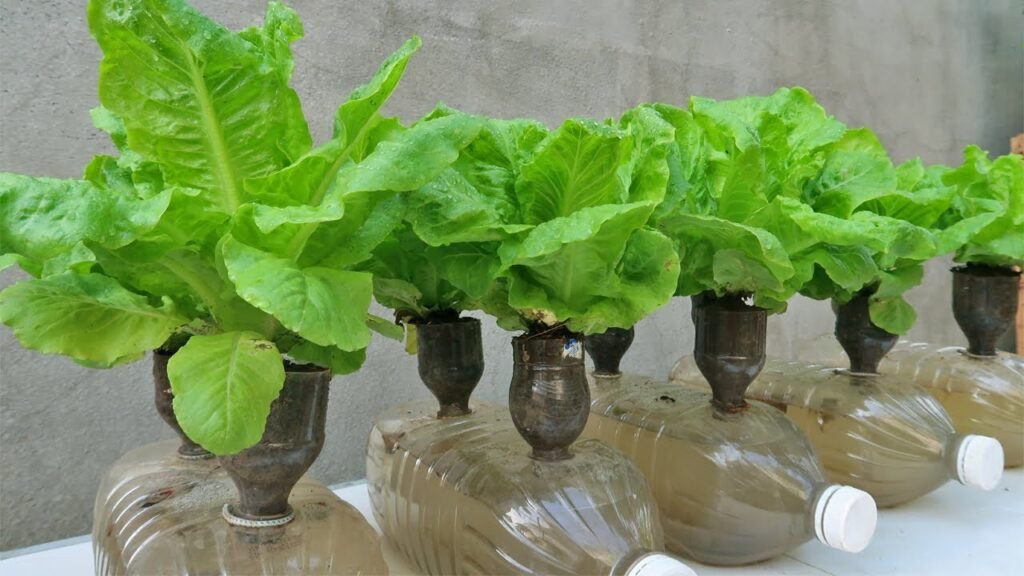
Not all lettuce varieties thrive in soil-free systems. Selecting the right type ensures optimal growth:
- Leaf lettuce: Ideal for continuous harvesting; varieties like Green Coral or Red Oakleaf grow quickly and produce tender leaves.
- Butterhead lettuce: Produces soft, sweet leaves; suitable for hydroponic setups.
- Romaine/Cos lettuce: Sturdy leaves with a slightly sweet taste; grows well in nutrient-rich water solutions.
- Loose-leaf varieties: Quick-growing, perfect for staggered harvesting and multiple cycles.
Choosing the right variety ensures you enjoy big, crispy leaves that are sweet and tender.
Materials Needed for Soil-Free Lettuce
To grow lettuce without soil, you’ll need a few simple items:
- Containers: Plastic trays, buckets, or hydroponic reservoirs to hold water and nutrients.
- Growing medium: Options like coconut coir, rock wool, or perlite to support the roots.
- Lettuce seeds or seedlings: High-germination seeds for faster results.
- Nutrient solution: Hydroponic fertilizer or balanced liquid nutrients for plant growth.
- Water: Clean, preferably filtered or dechlorinated water.
- Light source: Sunlight or LED grow lights for indoor setups.
With these materials, you can create a productive, soil-free lettuce system at home.
Step 1: Preparing the Growing System
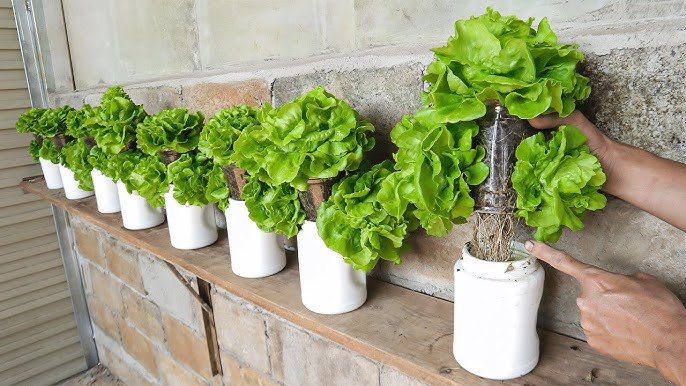
The first step is to prepare a stable, nutrient-rich environment for your lettuce:
- Container setup: Choose a tray or container that holds water and growing medium. For deep-water culture, use a reservoir with floating net pots.
- Growing medium: Fill net pots with rock wool, coconut coir, or perlite. These mediums provide support while allowing roots to access water and nutrients.
- Water level: Maintain enough water to reach the base of the medium, allowing roots to absorb nutrients without drowning the plant.
- pH balance: Lettuce thrives at a pH of 5.5–6.5. Test and adjust the nutrient solution for optimal growth.
Proper setup ensures your lettuce has a stable, nutrient-rich environment for fast and healthy growth.
Step 2: Sowing Seeds
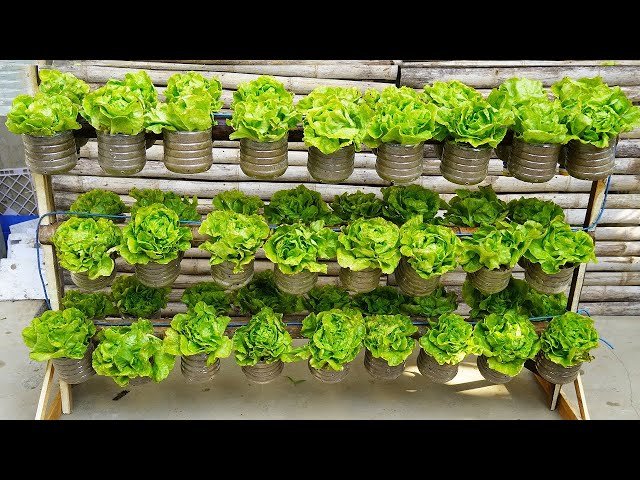
Planting lettuce seeds correctly is essential for even germination:
- Seed preparation: Rinse seeds gently to remove any dust. Optional: Soak seeds for 2–4 hours to speed germination.
- Planting: Place 2–3 seeds in each net pot, lightly covering with growing medium.
- Watering: Mist seeds gently to keep the medium moist. Avoid overwatering to prevent fungal issues.
- Germination: Seeds typically sprout within 3–7 days under ideal conditions.
Ensure seeds receive adequate light and warmth to encourage strong, uniform sprouting.
Step 3: Providing Light and Temperature
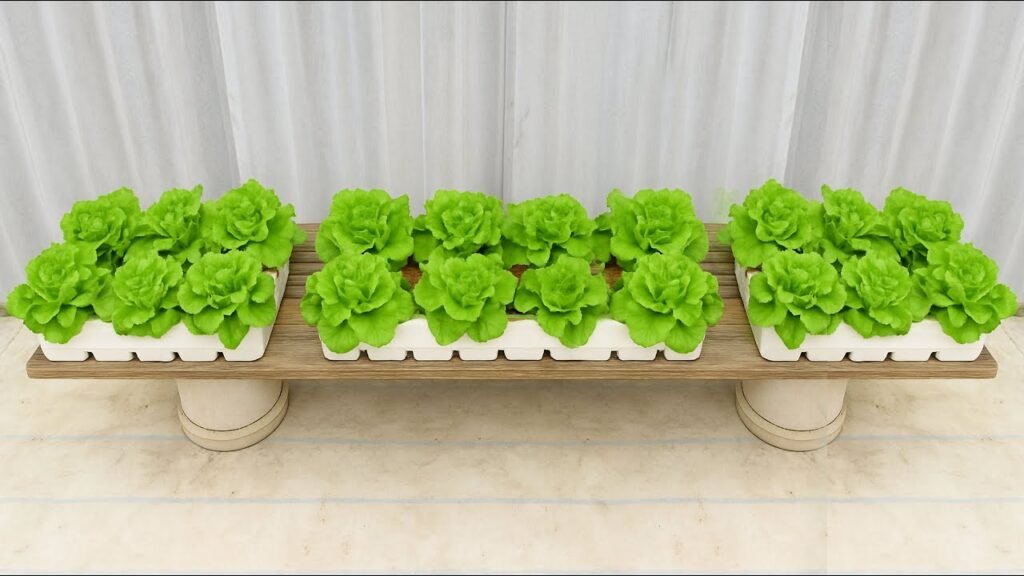
Lettuce requires the right environmental conditions for optimal growth:
- Light: Provide 12–16 hours of light daily. If indoors, use LED grow lights to supplement sunlight.
- Temperature: Lettuce grows best in 18–24°C (64–75°F). Avoid high temperatures, which can cause bitterness or bolting.
- Air circulation: Ensure gentle airflow to prevent mold and promote healthy leaves.
Controlling light, temperature, and air movement is crucial for producing sweet, crisp leaves.
Step 4: Feeding Lettuce with Nutrients
In a soil-free system, nutrient solutions replace the natural fertility of soil:
- Hydroponic fertilizer: Use a balanced nutrient solution with essential macro and micronutrients.
- Frequency: Change or top up nutrient solution every 1–2 weeks to maintain freshness.
- Concentration: Follow instructions carefully; over-fertilizing can burn roots, while under-fertilizing slows growth.
Providing the right nutrients ensures your lettuce grows fast, with large, tender leaves.
Step 5: Supporting Continuous Growth
For big, sweet leaves, continuous care is essential:
- Pruning: Remove older or damaged leaves to encourage new growth.
- Spacing: Avoid overcrowding to ensure each plant receives enough light and nutrients.
- Monitoring roots: Healthy, white roots indicate the plant is thriving. Yellow or brown roots may indicate nutrient imbalance or poor oxygenation.
Maintaining proper plant health ensures maximum yield and leaf quality.
Step 6: Harvesting Lettuce
Knowing when and how to harvest is key to enjoying sweet, crispy leaves:
- Timing: Leaf lettuce can be harvested 3–4 weeks after germination. Butterhead and romaine take 4–6 weeks.
- Method: Use scissors to snip outer leaves, leaving the central growing point intact for continuous harvest.
- Frequency: Harvesting every 2–3 days promotes new growth and keeps leaves tender.
Proper harvesting encourages ongoing productivity, providing fresh lettuce continuously.
Benefits of Soil-Free Lettuce
- Fast growth: Nutrient solutions allow leaves to grow larger and sweeter.
- High yield: More leaves per plant in less space compared to traditional soil methods.
- Less maintenance: No weeding, soil preparation, or pest-prone soil.
- Eco-friendly: Uses less water and eliminates the need for chemical pesticides.
- Indoor gardening: Enjoy fresh lettuce year-round, even without a garden.
Soil-free methods transform small spaces into productive lettuce gardens with minimal effort.
Tips for Unbeatable Lettuce Growth
- Stagger planting: Sow seeds every 1–2 weeks for continuous harvest.
- Monitor water quality: Dechlorinated or filtered water ensures healthy roots.
- Maintain nutrient levels: Regularly check and refresh hydroponic solution.
- Provide adequate light: Ensure 12–16 hours per day for indoor setups.
- Prevent pests: Keep leaves dry and monitor for aphids or fungus gnats.
Following these tips maximizes growth, flavor, and leaf size.
Conclusion
Growing big, crispy, sweet lettuce without soil is no longer a dream—it’s an achievable, exciting method for home gardeners. With simple materials like containers, growing medium, seeds, and nutrient solutions, anyone can cultivate a productive lettuce garden at home, regardless of space. By following proper steps—preparing the growing system, sowing seeds, providing light, feeding nutrients, supporting growth, and harvesting carefully—you can enjoy a continuous supply of fresh, delicious lettuce.
Soil-free lettuce cultivation is perfect for urban living, small apartments, and indoor gardening. It offers faster growth, higher yield, and better flavor than traditional soil-grown methods. With patience and care, you can enjoy a year-round supply of fresh, crisp, and sweet lettuce right at your fingertips.
Whether you are a seasoned gardener or a beginner, this method is simple, efficient, and incredibly rewarding. Start today and experience the unbeatable benefits of growing your own lettuce without soil!
